Szt. István beaming down beatifically at the building, a rare Hungarian-language Chicago church, and an unusual Protestant-to-Catholic church conversion–St. Stephen King of Hungary in Ukrainian Village is a neat one.
Designed by architect Theodore Duesing, this church on Augusta opened in 1902 as the Fourth German Methodist Episcopal Church. The Hungarians moved in in the late 1930s. Chicago’s Hungarian population isn’t exactly growing anymore, so St. Stephen was recently at risk of closure as part of the Archdiocese of Chicago’s Renew My Church initiative. As the only place performing a Hungarian-language Catholic mass within a 300-mile radius, St. Stephen’s successfully avoided a merger or closure–sort of. In 2021, the parish was extinguished, but the church will remain open as a mission.
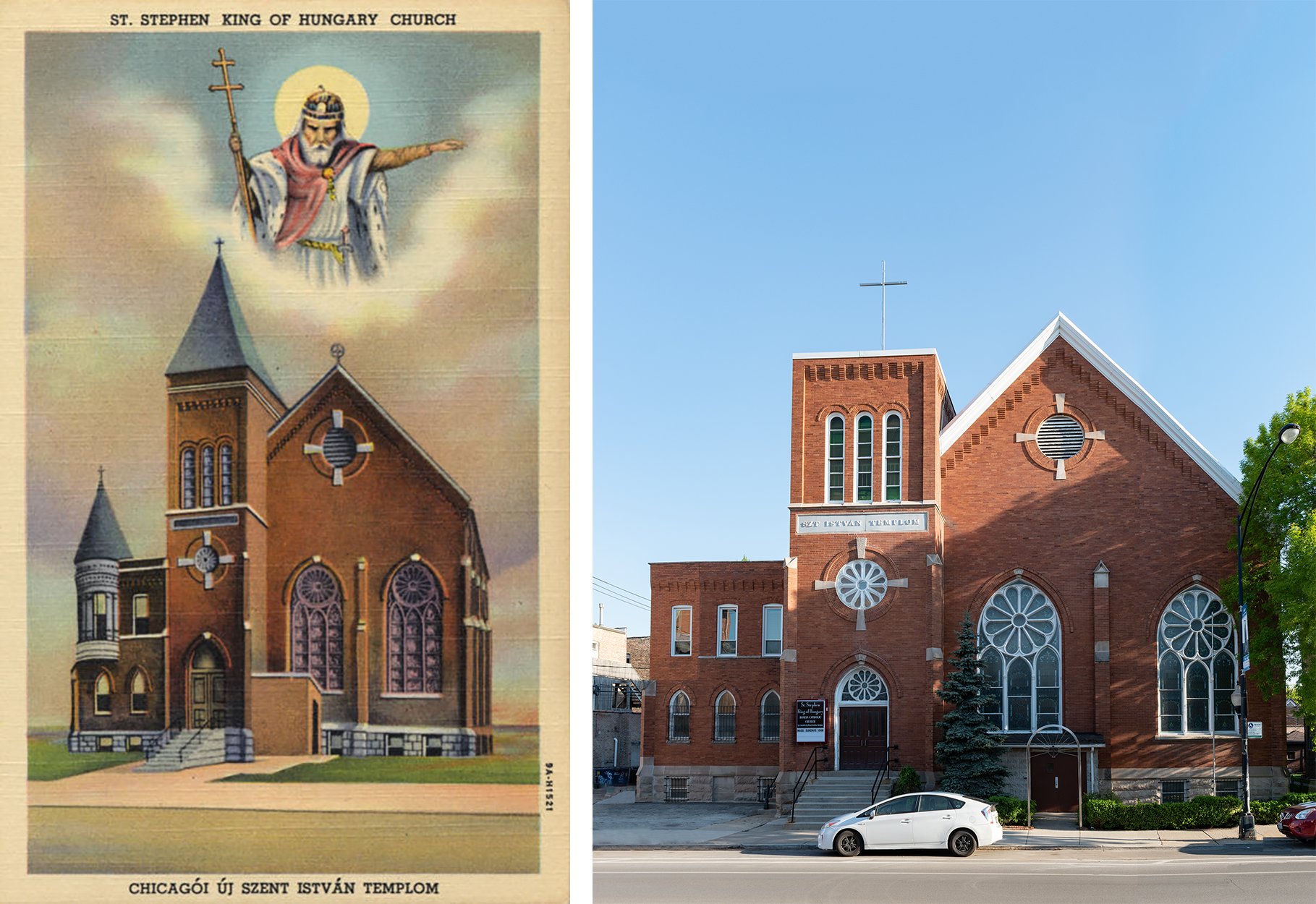
So, what's changed? The parsonage lost its turret and the church tower lost its roof–likely between 1985 and 1990–but otherwise St. Stephen King of Hungary looks pretty good for a 120 year old church with a shrinking congregation.
In 1901, the German Methodist Episcopal congregation at 1062 N. Ashland sold their wood frame church to a Galician Jewish congregation, Anshei Sfard. They hired architect Theodore Duesing in 1901 to design them a new building less than a mile away as West Town developed at the turn of the century. The Fourth German Methodist Episcopal Church opened here on Augusta Street (didn't yet have the Boulevard appellation) in 1902.


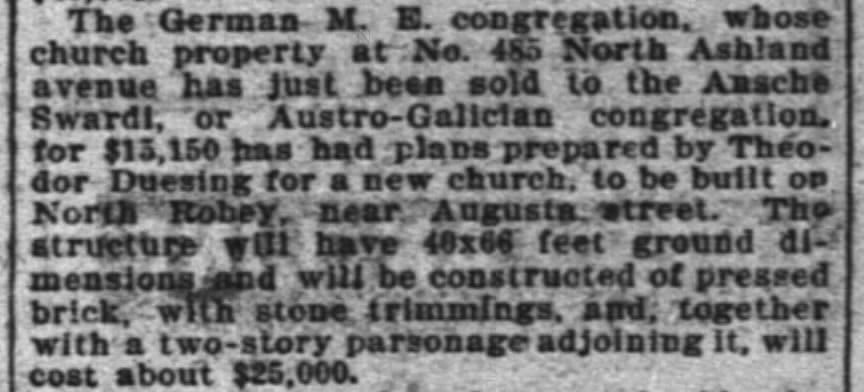
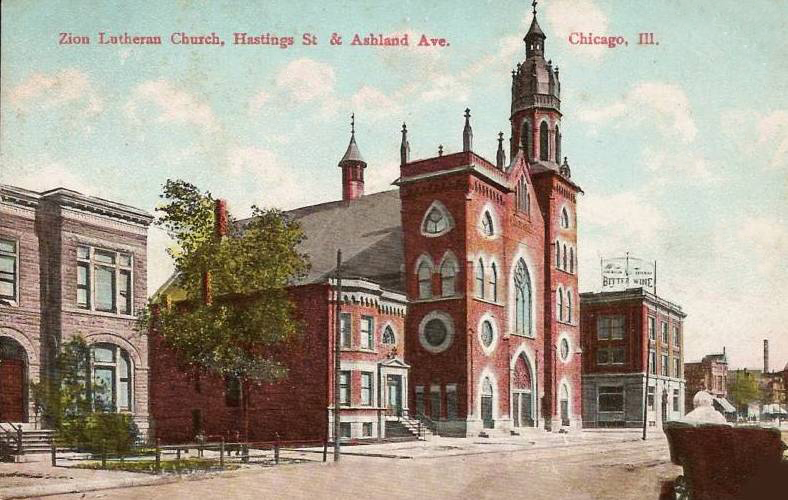
1901 Building Permit, Chicago Building Permits Digital Collection, UIC | 1901 articles on the new church | Postcard of the Theodore Duesing-designed Zion Lutheran Church at Hastings and Ashland
Duesing was an immigrant from Germany himself and popular within the community. Especially productive from the early 1900s into the 1910s, Duesing designed homes, apartment buildings, commercial buildings, and at least one other German church–the recently demolished Zion German Lutheran church on Ashland and Hastings.
Anti-German hysteria during World War I crushed German Methodism as a distinct ministry within the parent Methodist Church, and German Methodist conferences across the US began to dissolve into the main body of the Methodist Church.
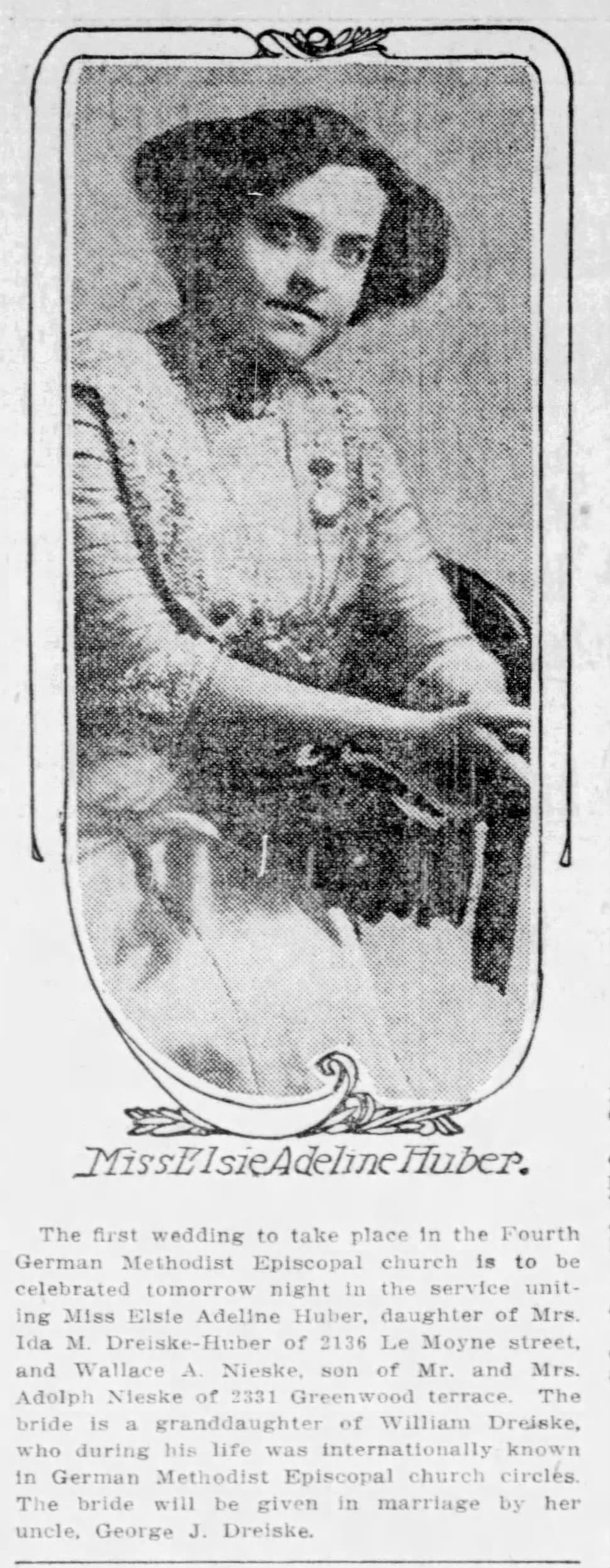
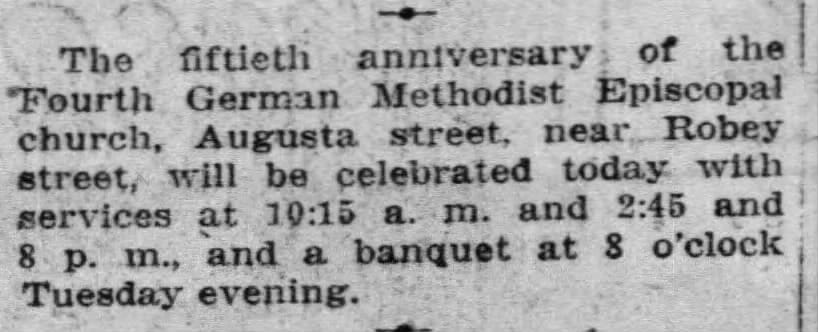
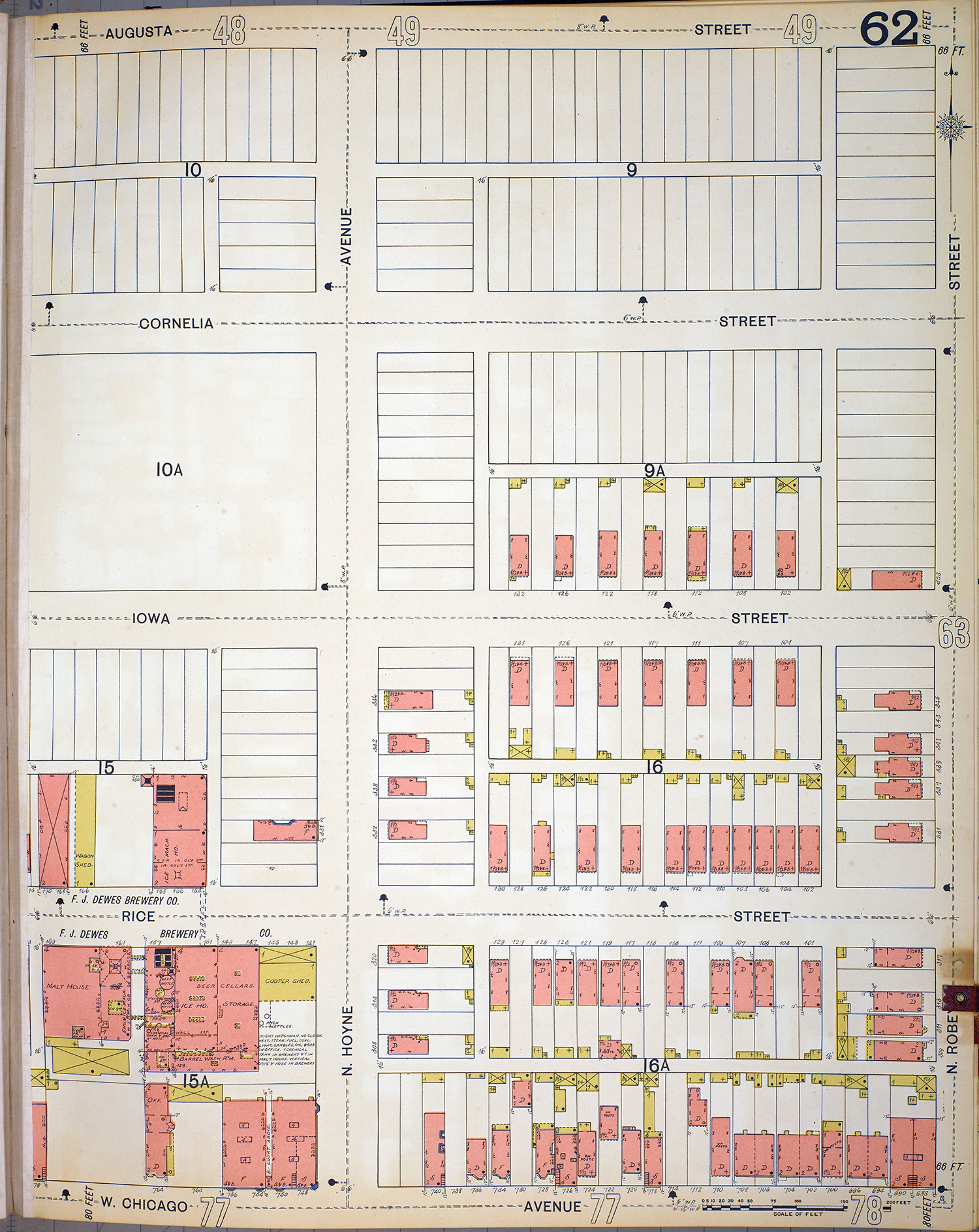
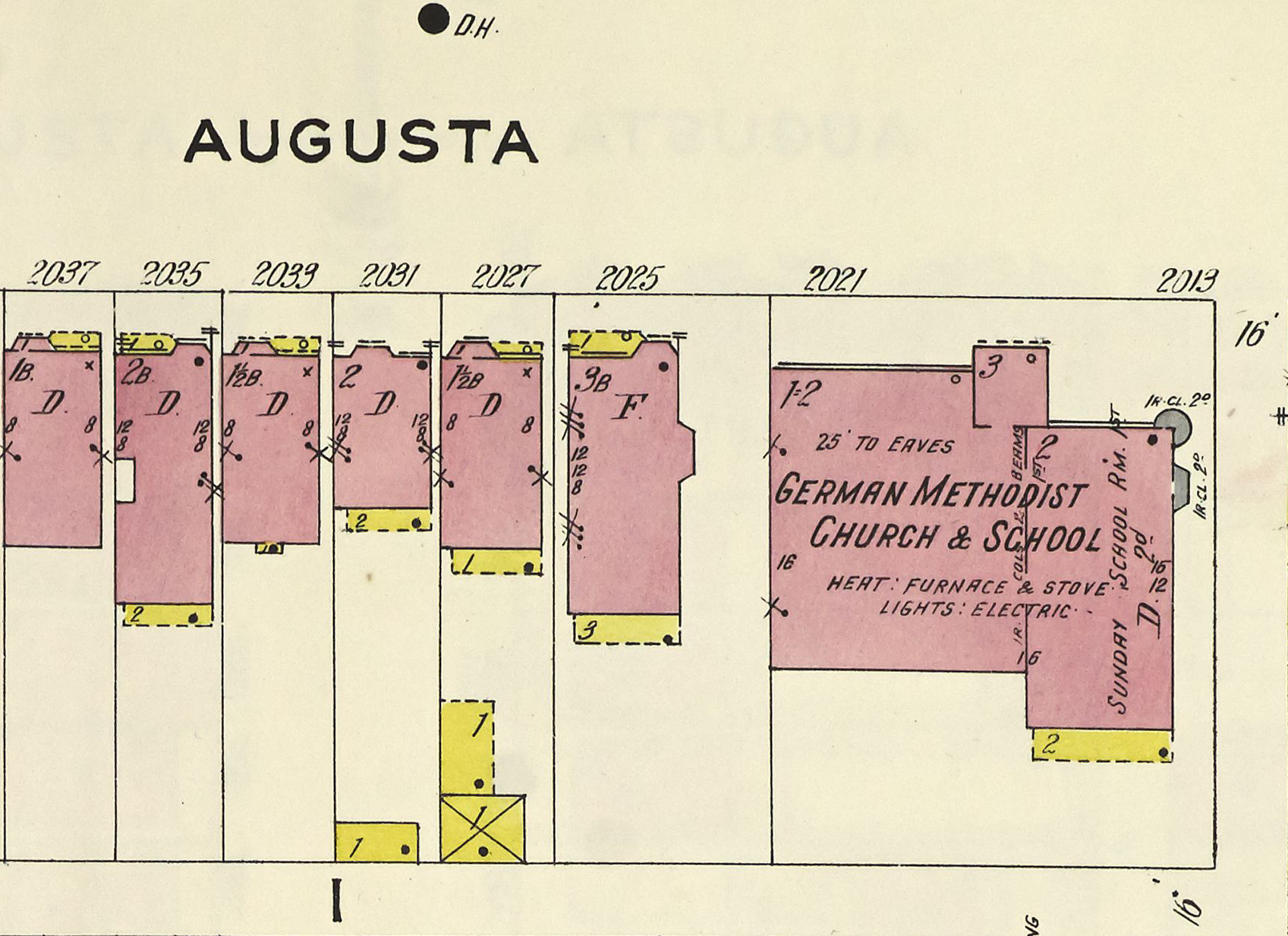
1913 wedding at the church, the Chicago Tribune | 1918, the German Methodist congregation celebrates their 50th anniversary, the Chicago Tribune | Notice that the block is completely empty in this 1892 Sanborn Map | 1916 Sanborn Map
The Fourth German M.E. congregation moved out by the early 1920s as the neighborhood grew more Eastern European. By 1923 the building was home to a Baptist missionary center attempting to convert the neighborhood’s Polish community, and at one point it was home to the Emmanuel Slovak Baptist Church–I get the impression that the building was semi-vacant, with many different religious organizations temporarily renting it out for services and events.
The parish that would become St. Stephen King of Hungary was established as St. Imre/St. Emeric’s in 1934 when they rented out a wood frame church building on Washtenaw in Logan Square (...and yeah, the terribly hip private restaurant St. Emeric now operates in that space).
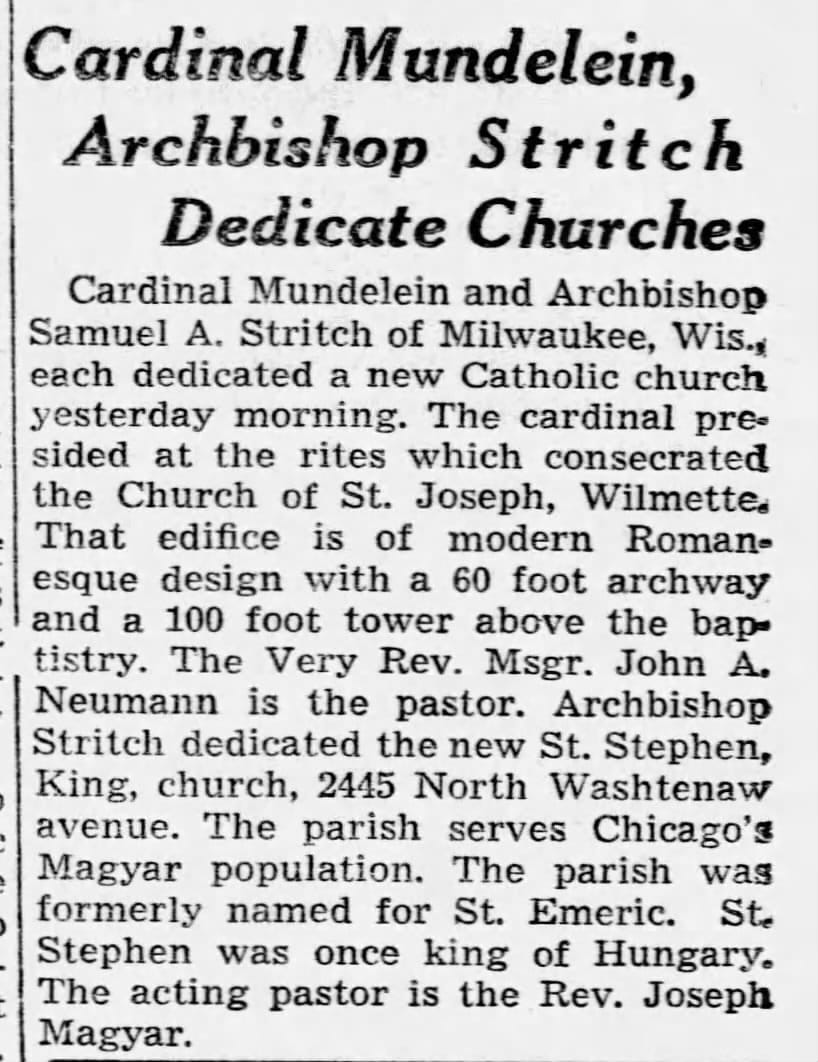
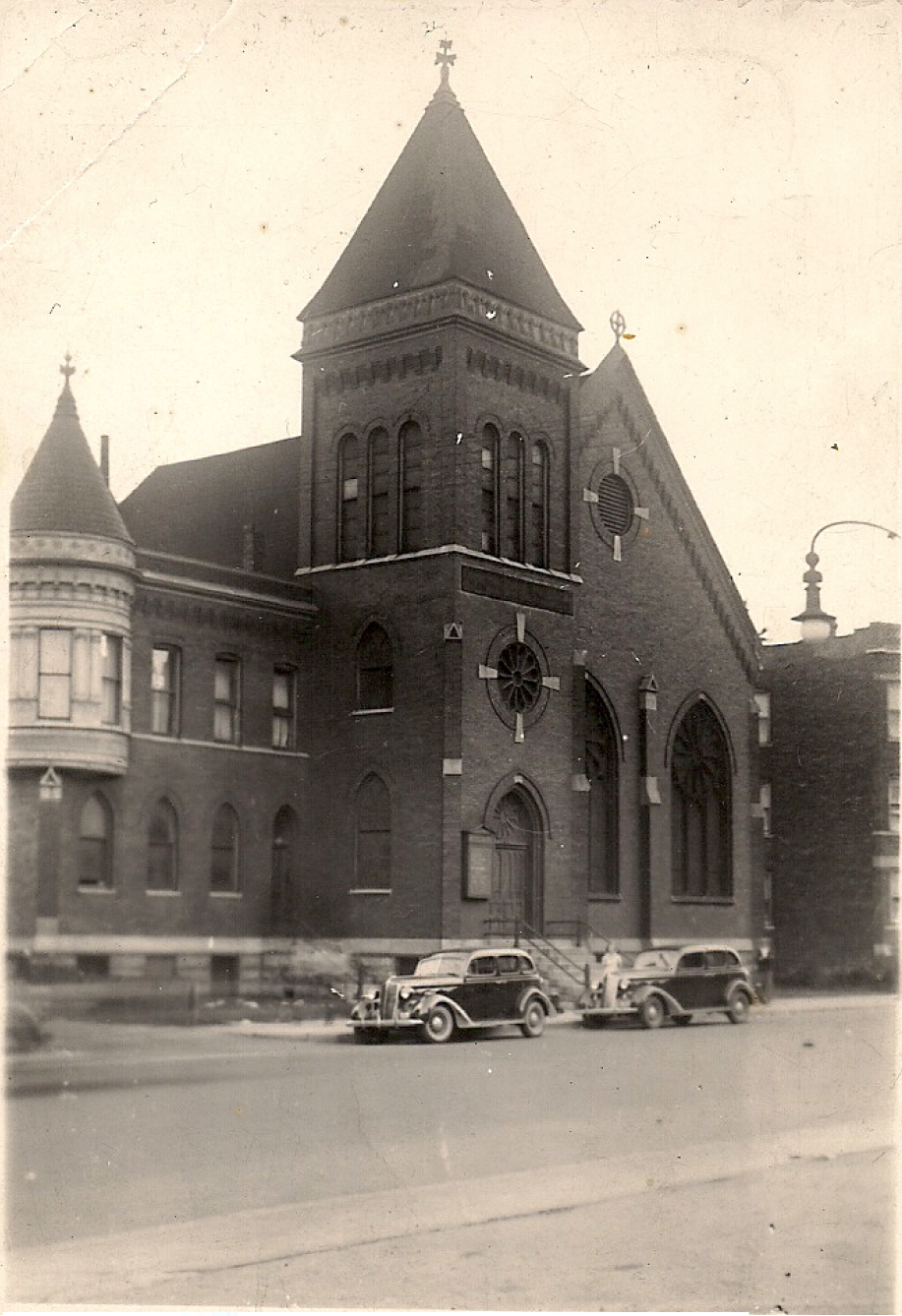
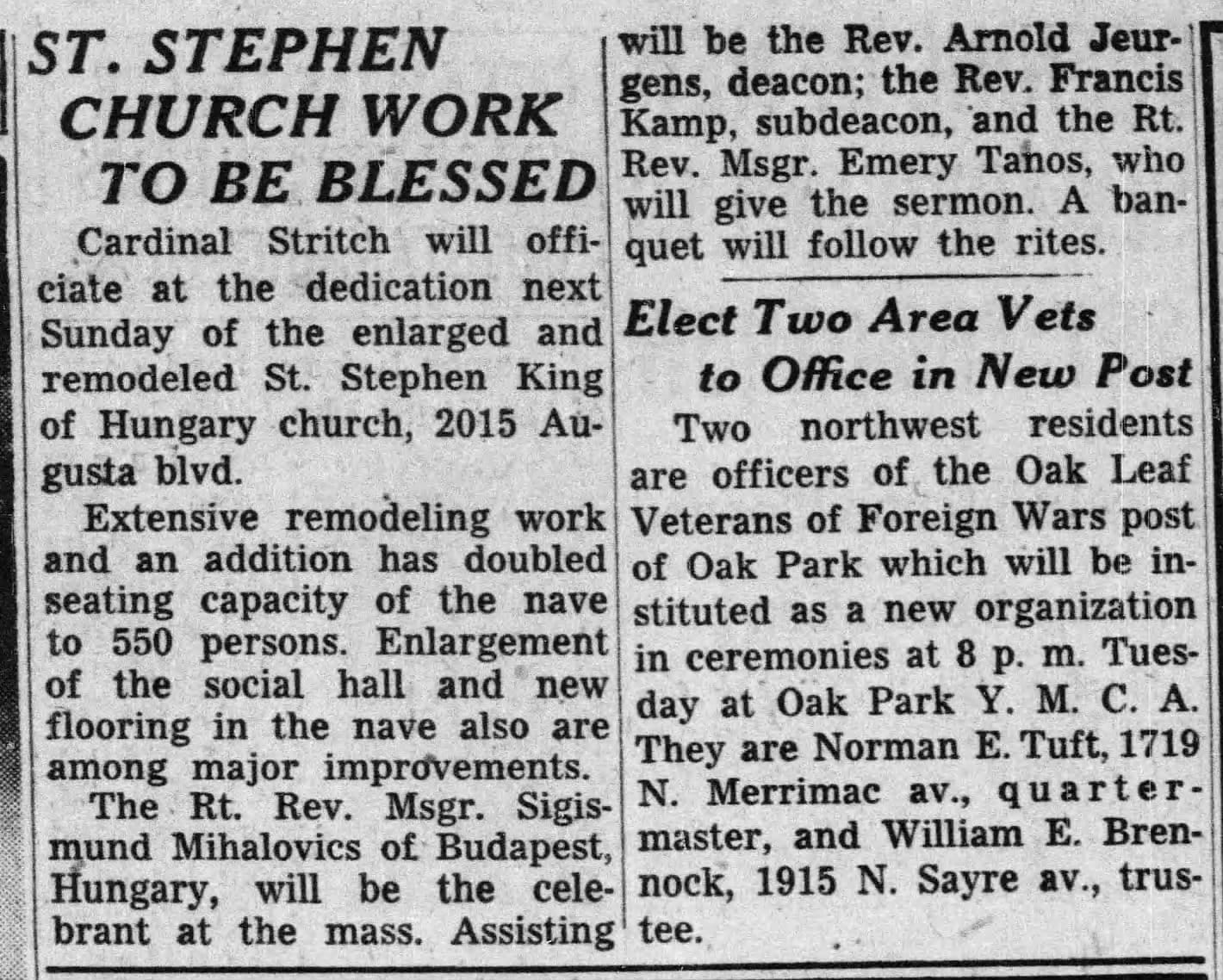
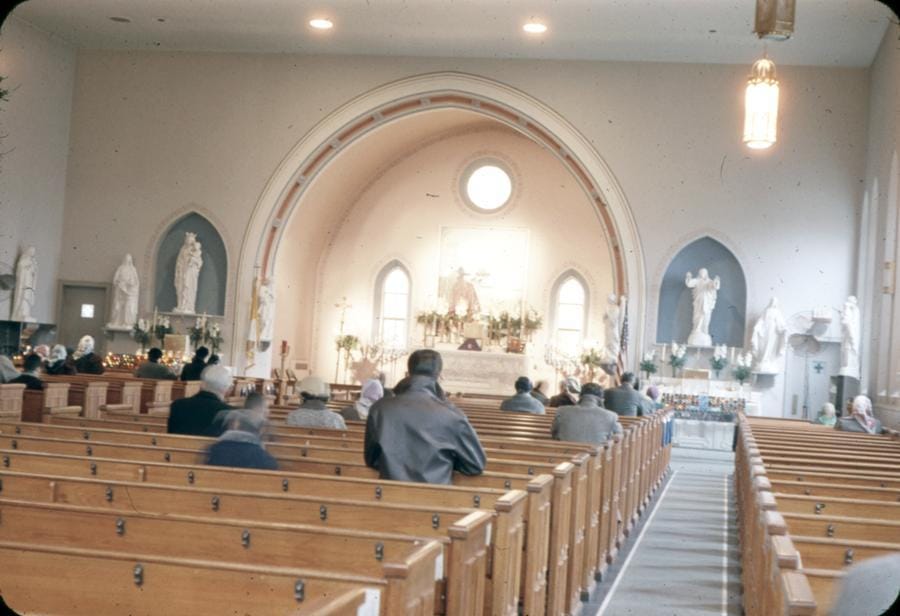
1939 article on the dedication, the Chicago Tribune | 1938, Magyarok Vasárnapja, Wikimedia Commons | 1954 article on the re-dedication, Chicago Tribune | 1955 interior photo, Mildred Mead, University of Chicago via Chicago Collections
The parish, one of two Hungarian Catholic churches in Chicago at the time, renamed itself St. Stephen King of Hungary when it bought this building on Augusta in 1938. More than 15 years after moving in, the parish doubled the seating capacity of the nave with a major renovation and expanded its social hall–Cardinal Stritch officiated its re-dedication in 1954.
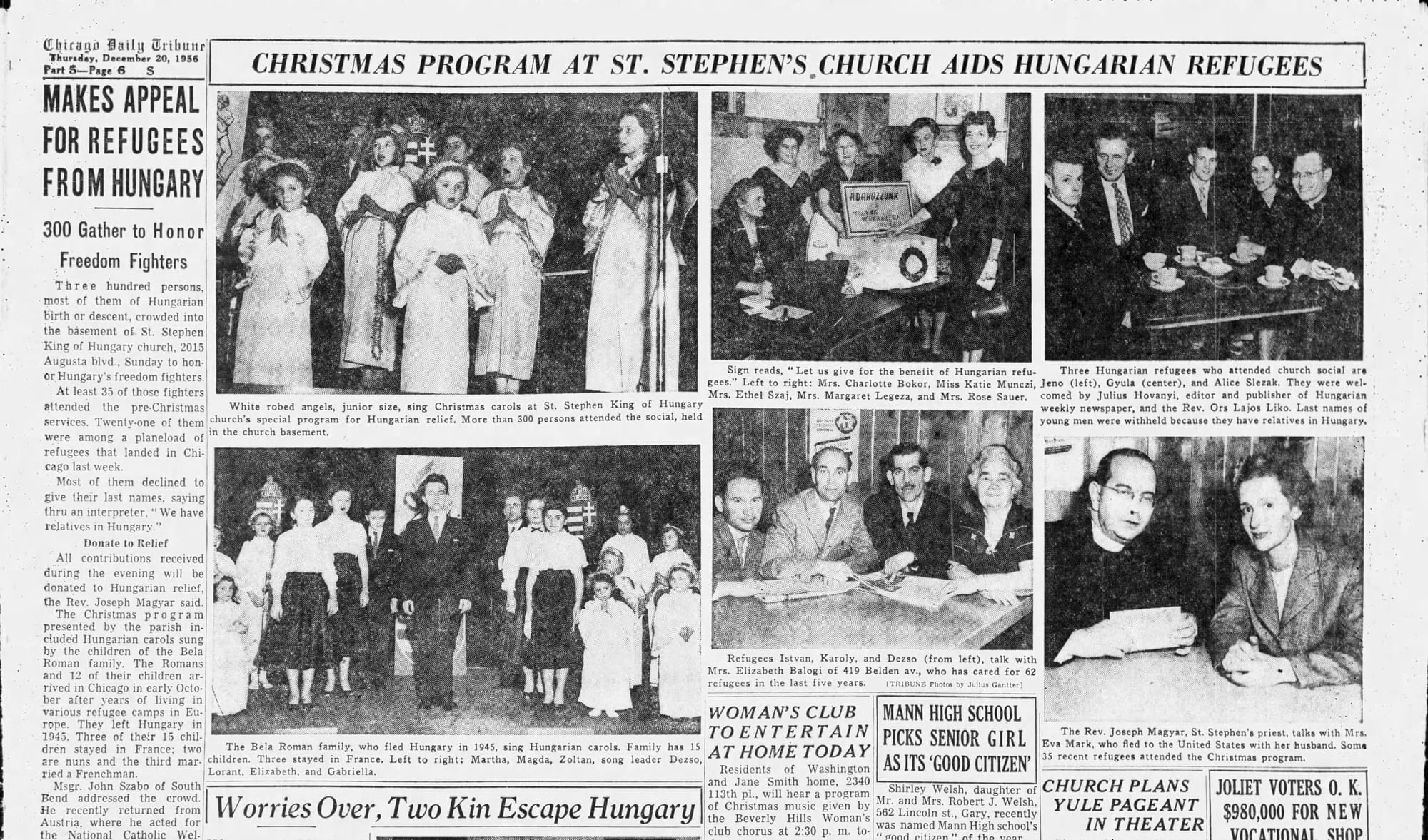
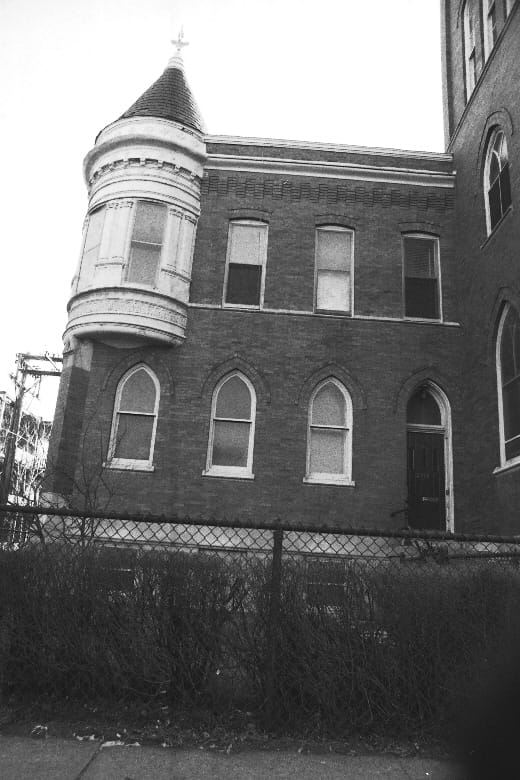
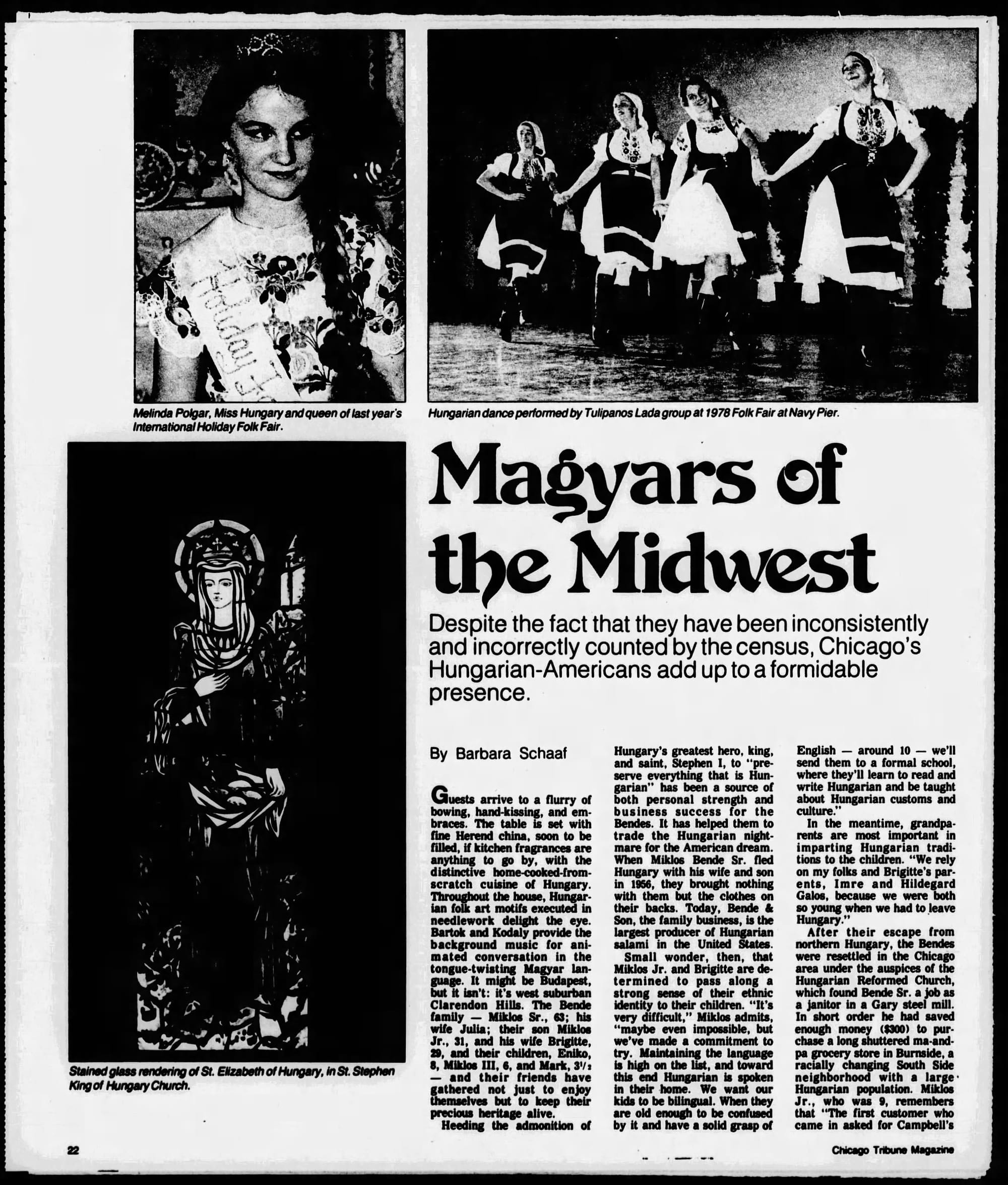
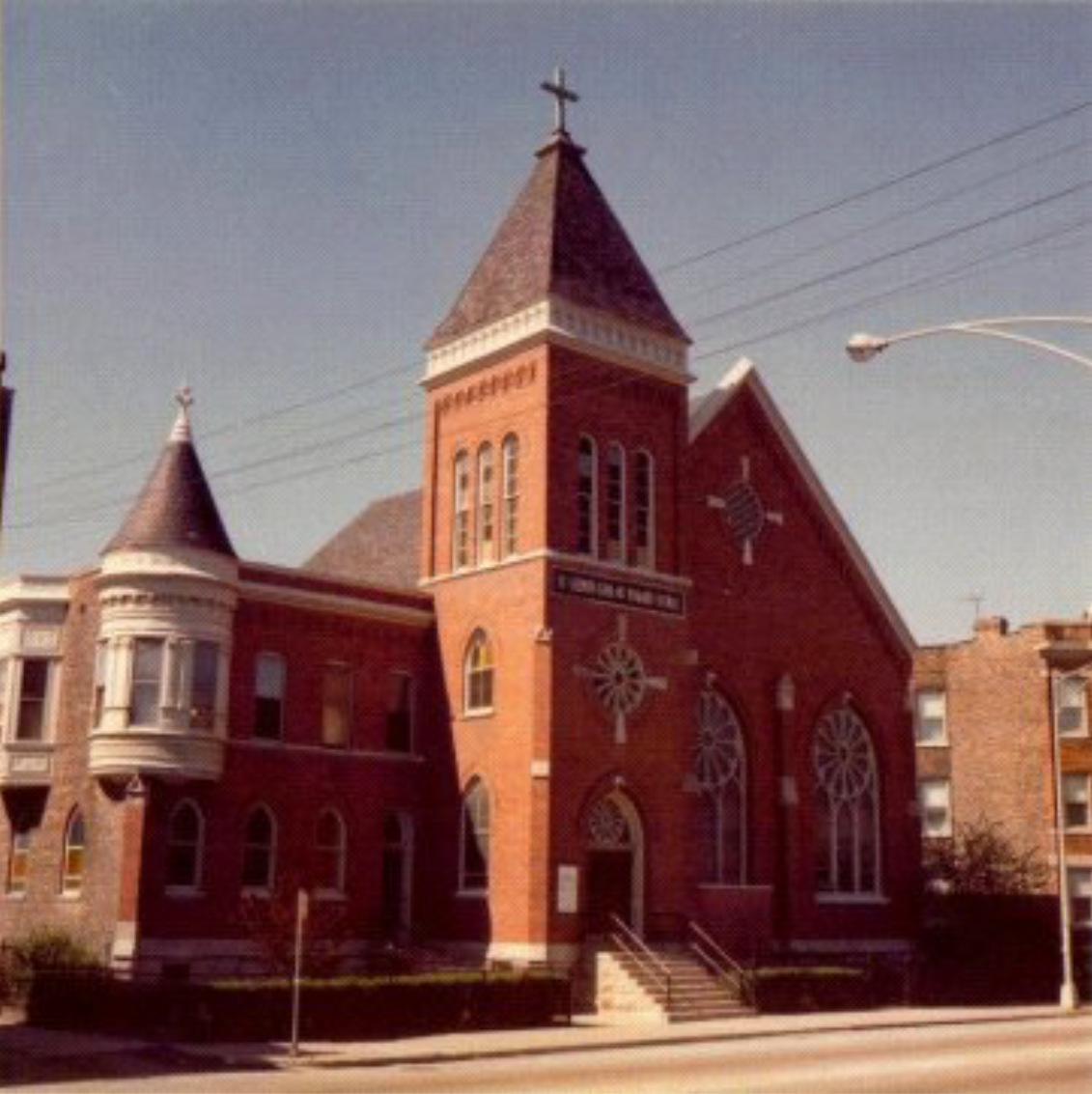
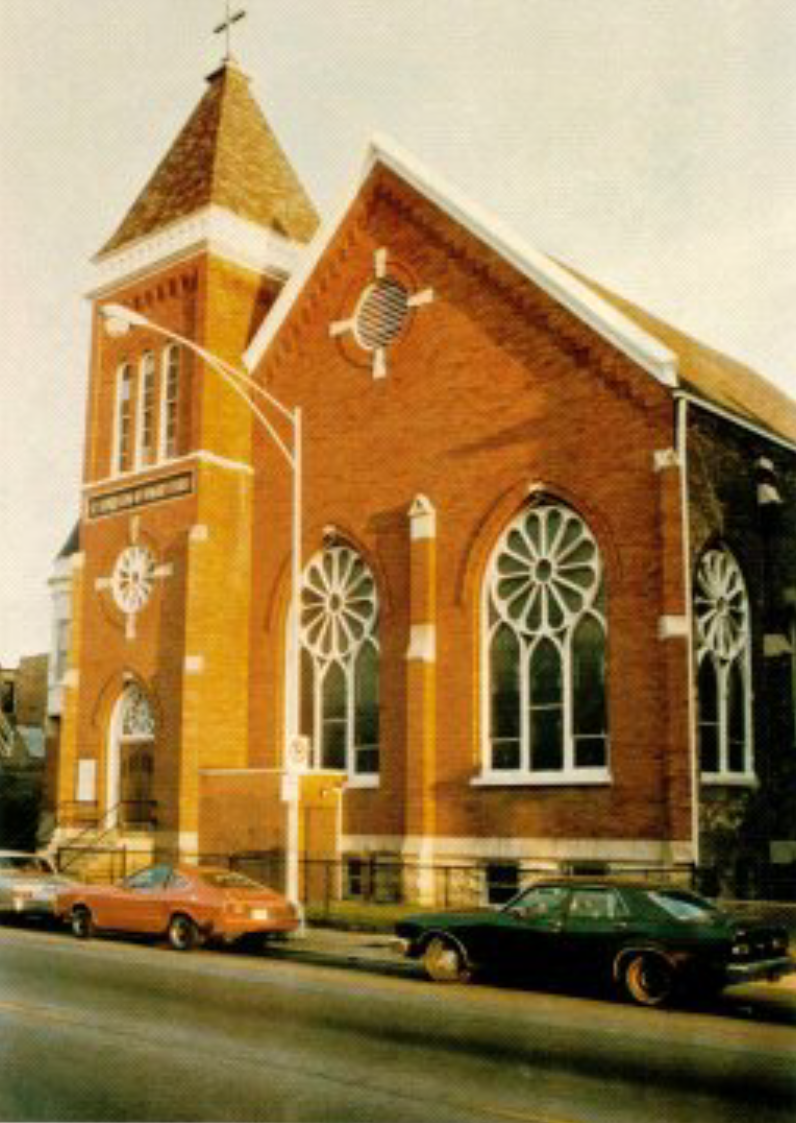
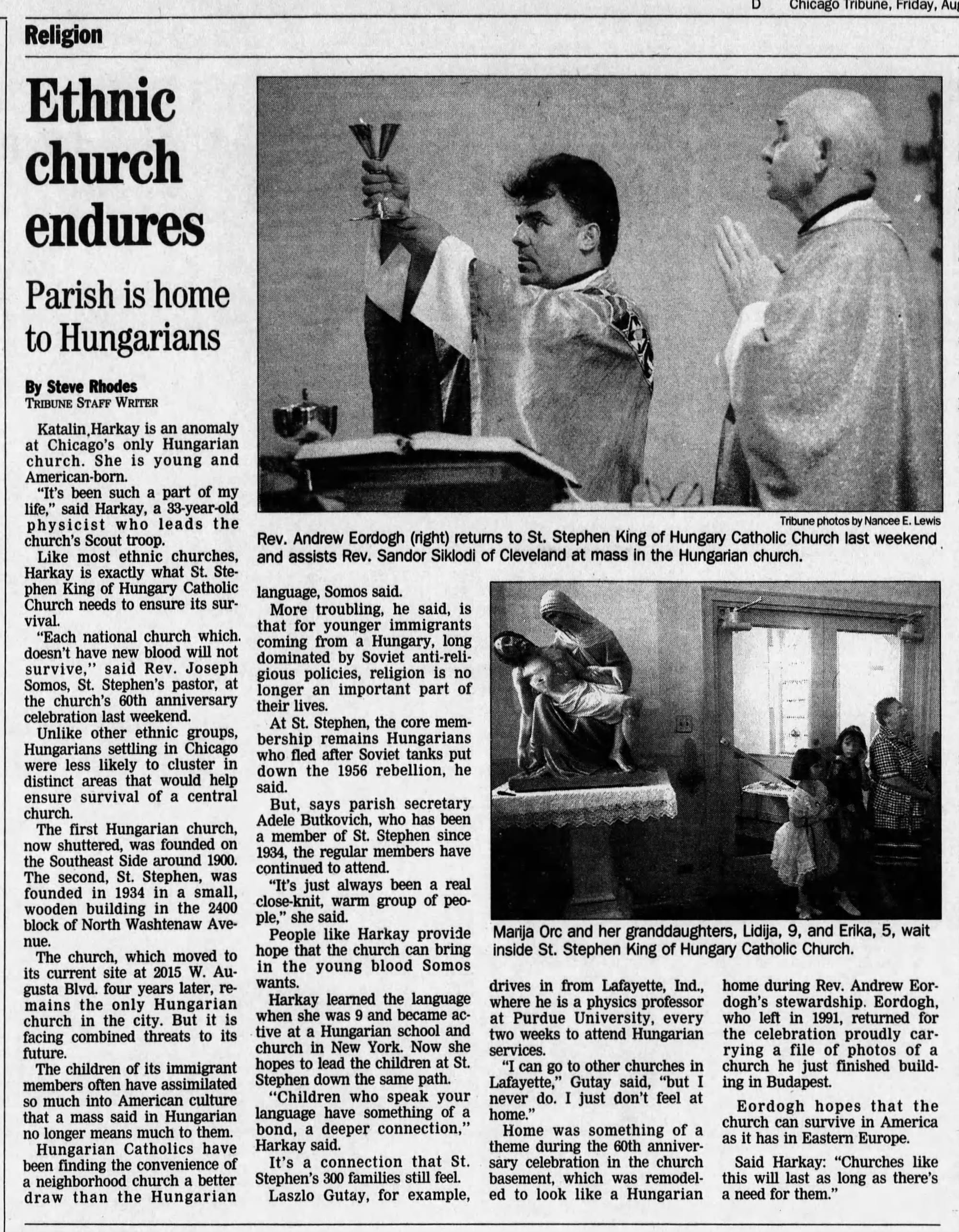
1956 article on their Christmas appeal for support for refugees from the crushed Hungarian Revolution | 1970s photo of the parsonage turret, Illinois State Historic Preservation Office | 1979, "Magyars of the Midwest" in the Chicago Tribune | 1970s or 1980s photos | "Ethnic Church Endures", 1994, the Chicago Tribune
A rare Chicago example of a Protestant-to-Catholic church refit–with St. Jerome the Croatian on the South Side the only other one that springs to mind–today St. Stephen, King of Hungary is one of only two Hungarian churches left in Chicago (there’s a small Hungarian Baptist Church in Jefferson Park). The congregation is small–in 2019, the average attendance at Sunday Mass was 41–and the parish struggled to find a Hungarian-speaking priest. However, it was self-sustaining financially and the only remaining center of Hungarian Catholicism in Illinois, so when the Archdiocese of Chicago weighed its future as part of the Renew My Church campaign, they chose in 2021 to reconfigure but maintain the church. The parish was extinguished, but immediately re-established as St. Stephen, King of Hungary Mission for Hungarian faithful. Gotta admit I can't parse the fine differences there, but the end result is that–86 years after moving in–there is still a Hungarian Catholic church on Augusta in Chicago.
Production Files
Further reading:
- Hungarian Roman Catholics in Chicago Memorial Book, -1904-1934-1939-1954-2004
- Renew My Church Decree, 2021
- "Rediscovering an Almost Forgotten Architect" by Kurt Etchingham in History Matters, the Historical Society of Oak Park River Forest newsletter, on Theodore Duesing

Incredibly, a version of the German Methodist church on Ashland is still kind of there. Congregation Anshe Sfard faced the building with brick after buying it from the German Methodists, then sold it to the Polish Falcons of America, who opened their nest #2 there in 1920. Looking at the Sanborn maps, that wood frame core, dating back to the German Methodists, lasted into the at least 1950s, but likely into the 2010s. The building was converted into apartments in the late 2010s, with just the masonry facade incorporated into the new building (...so I guess, none of the German Methodist church is left, but still a bit of its spiritual successor).
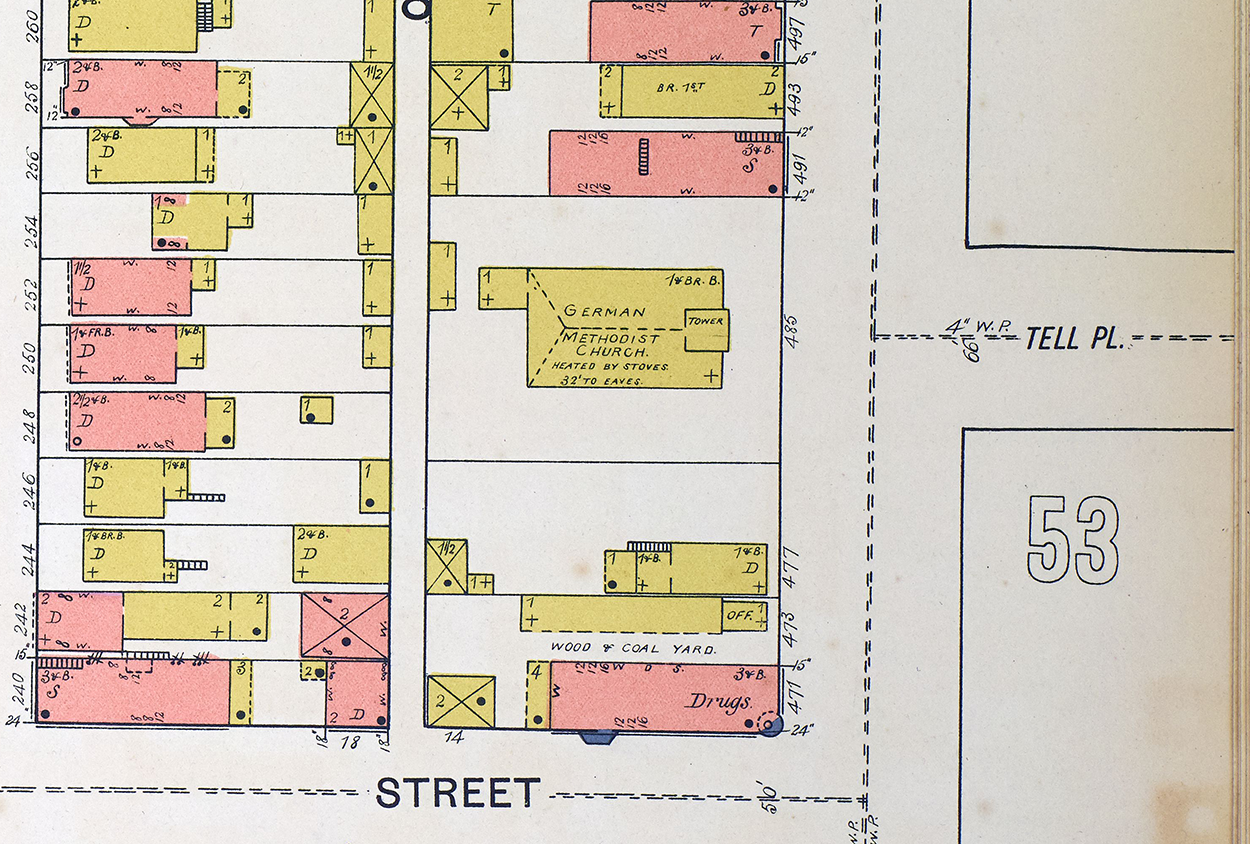
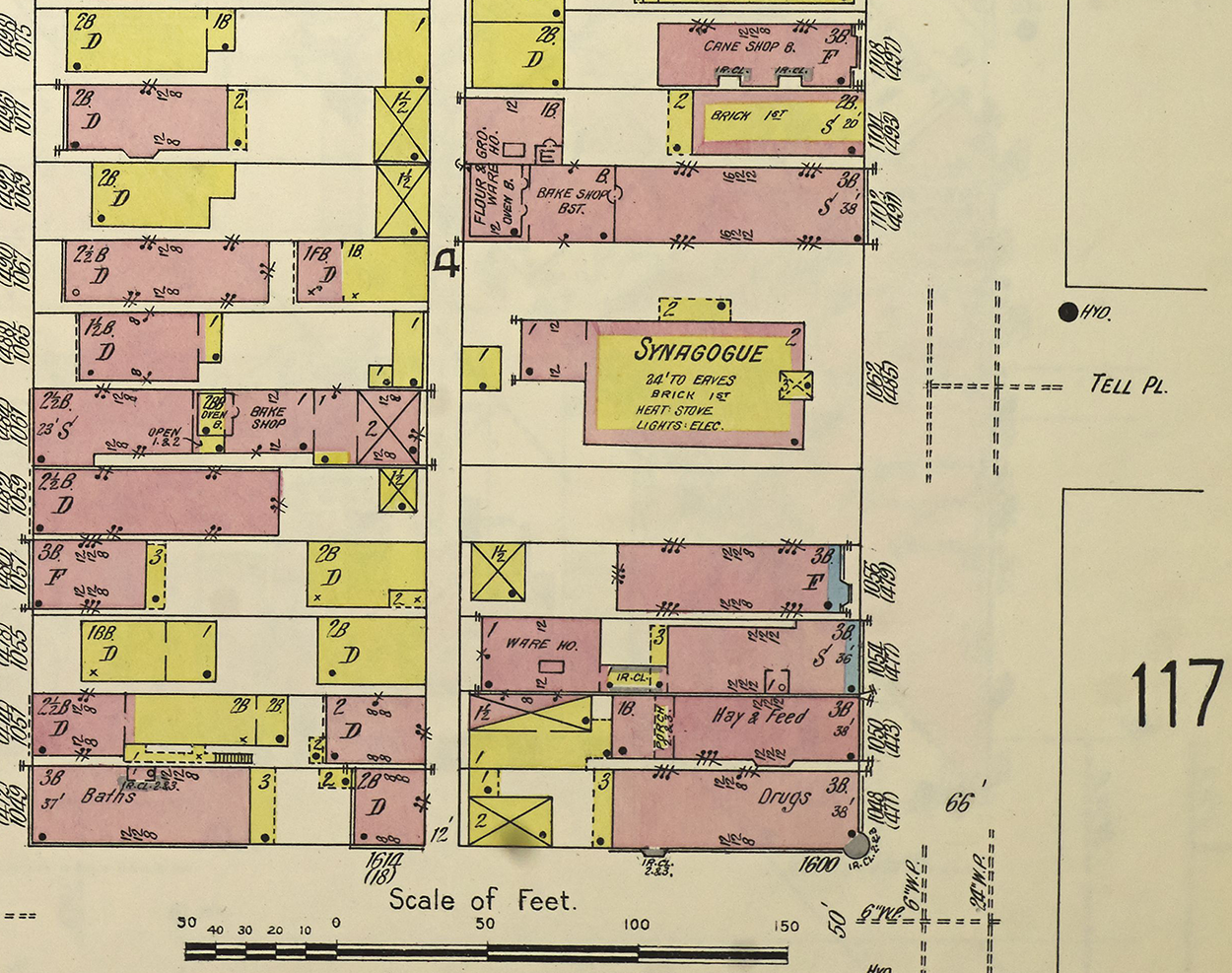
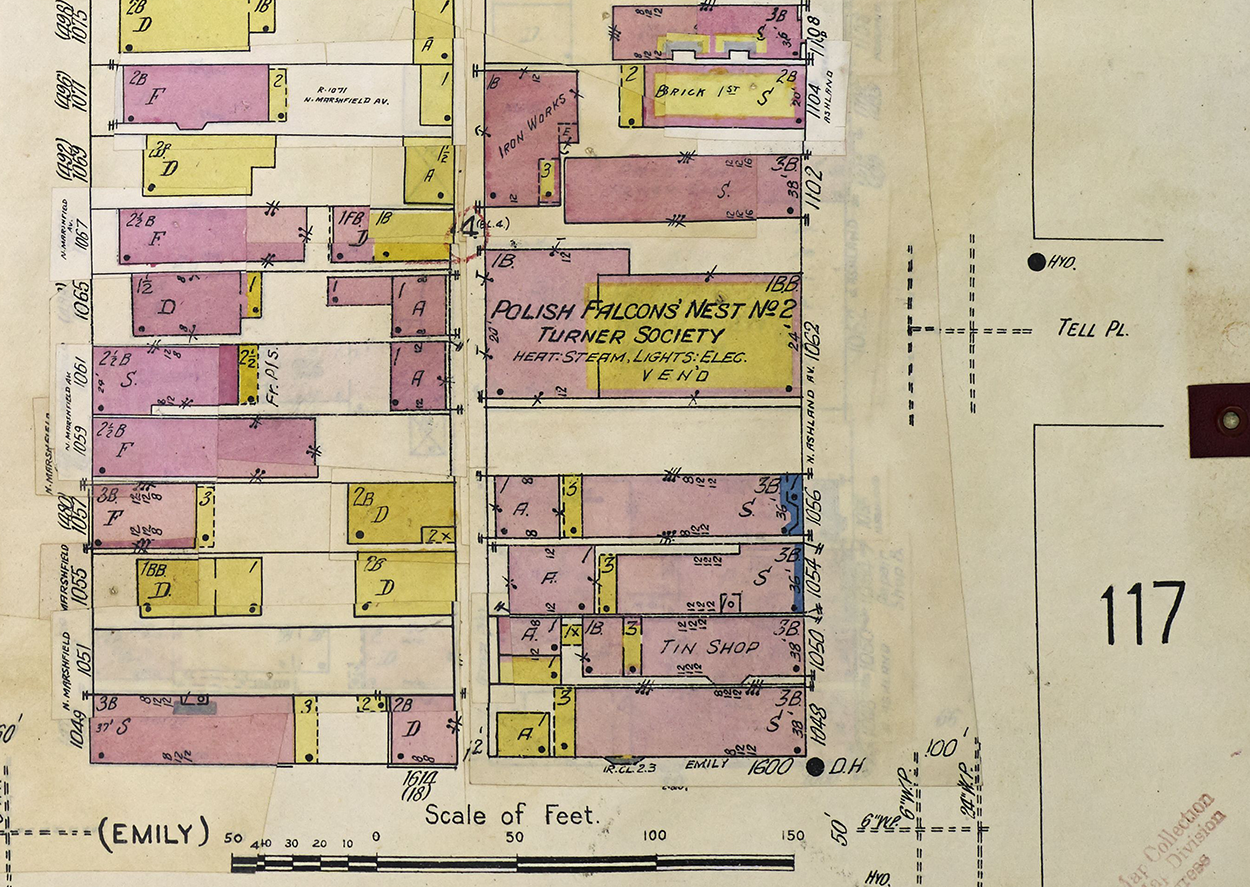
1062 N. Ashland in Sanborn maps in 1892, 1914, 1950
The Curt Teich production file on this one is fantastic–cackling at the instructions for how to add St. Stephen, the "be sure to show accents" on the Hungarian-language title, the "Very Rush". You can see how the retouchings slightly screwed up the church—it's missing some windows on its left side.
I have to imagine there were allegorical reasons for drawing in a ship on the right and a factory scene on the left of the church building, but I think it's funny as hell to really witness the thought process where they're like, "okay yeah that looks weird, take it out".
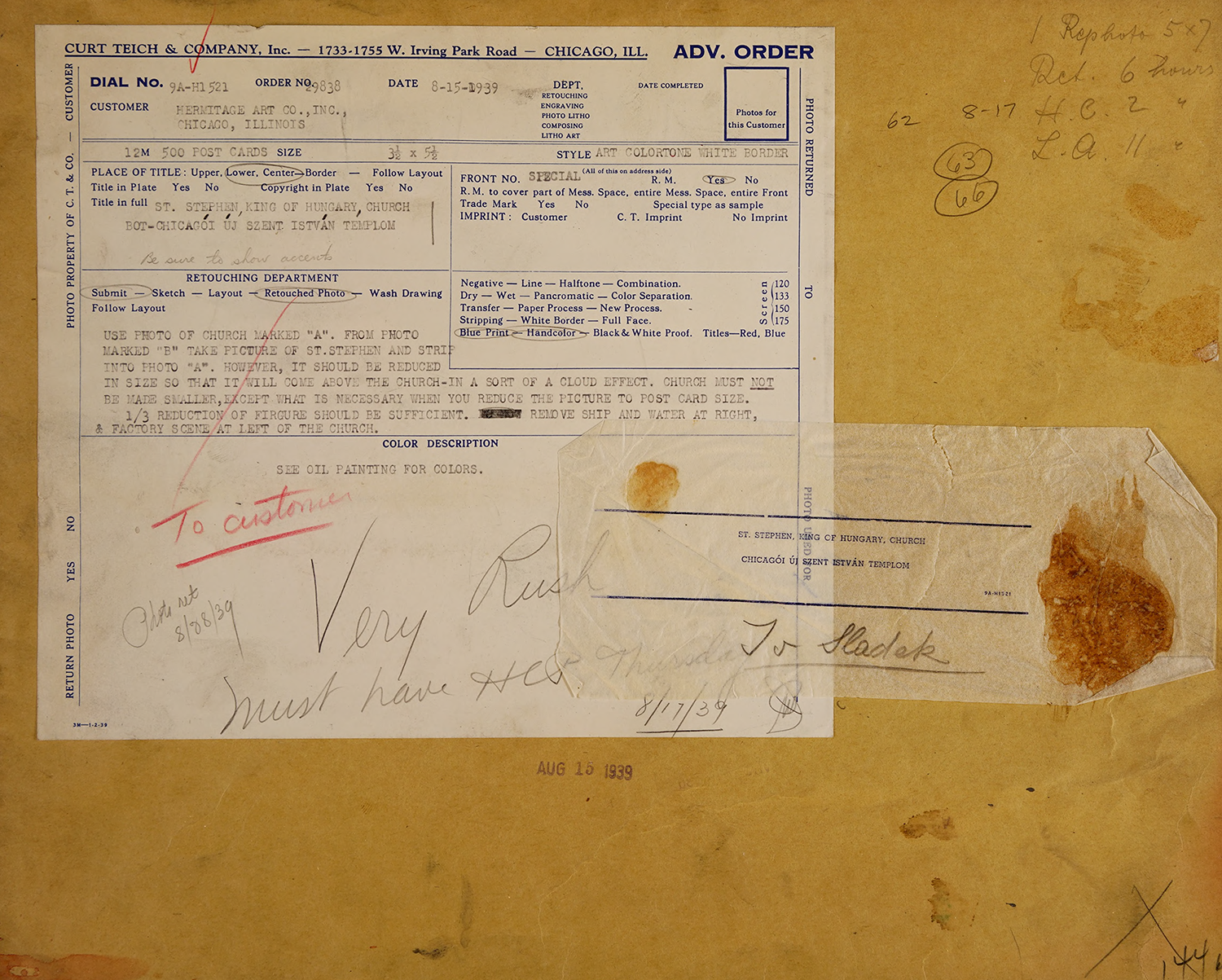
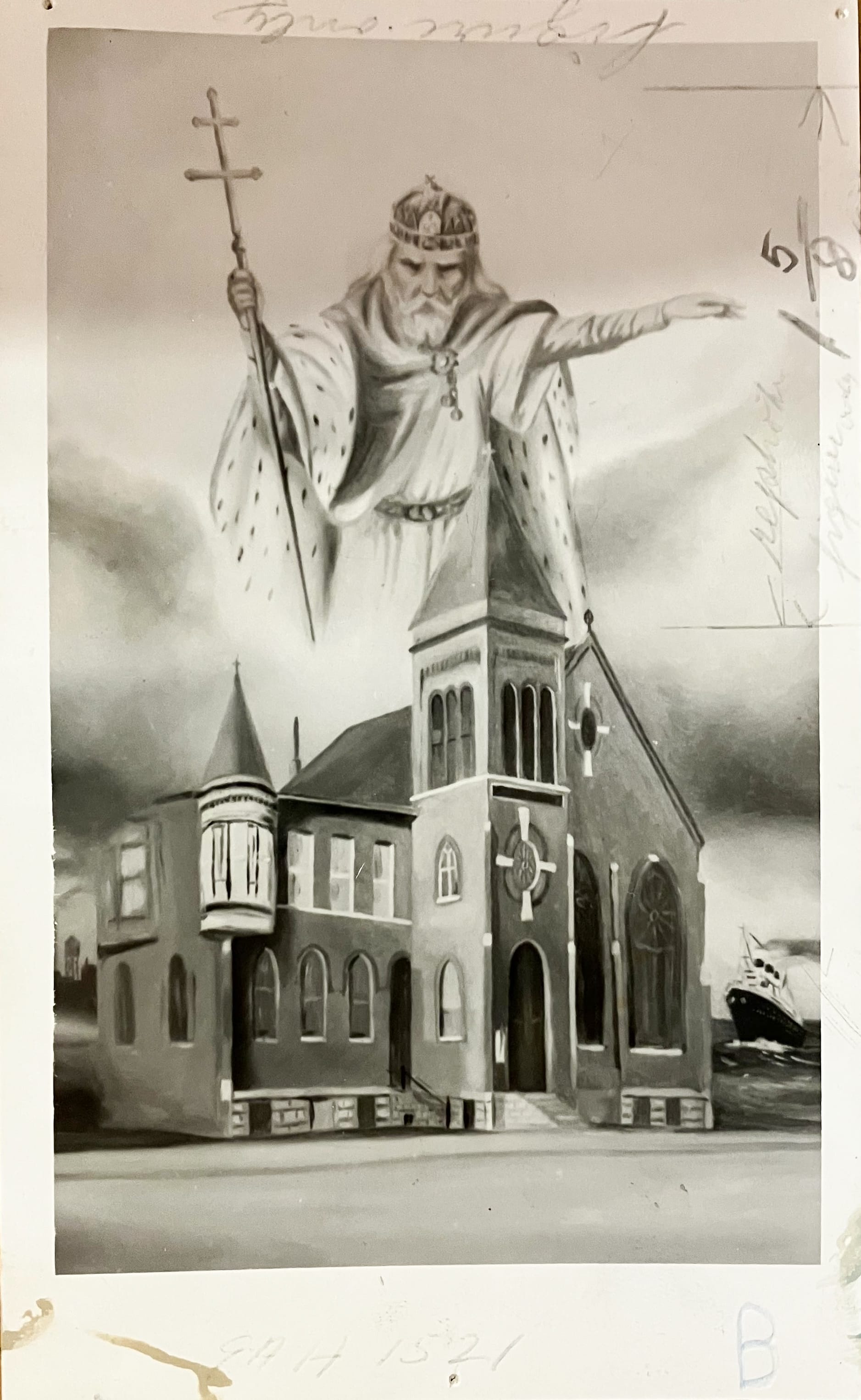
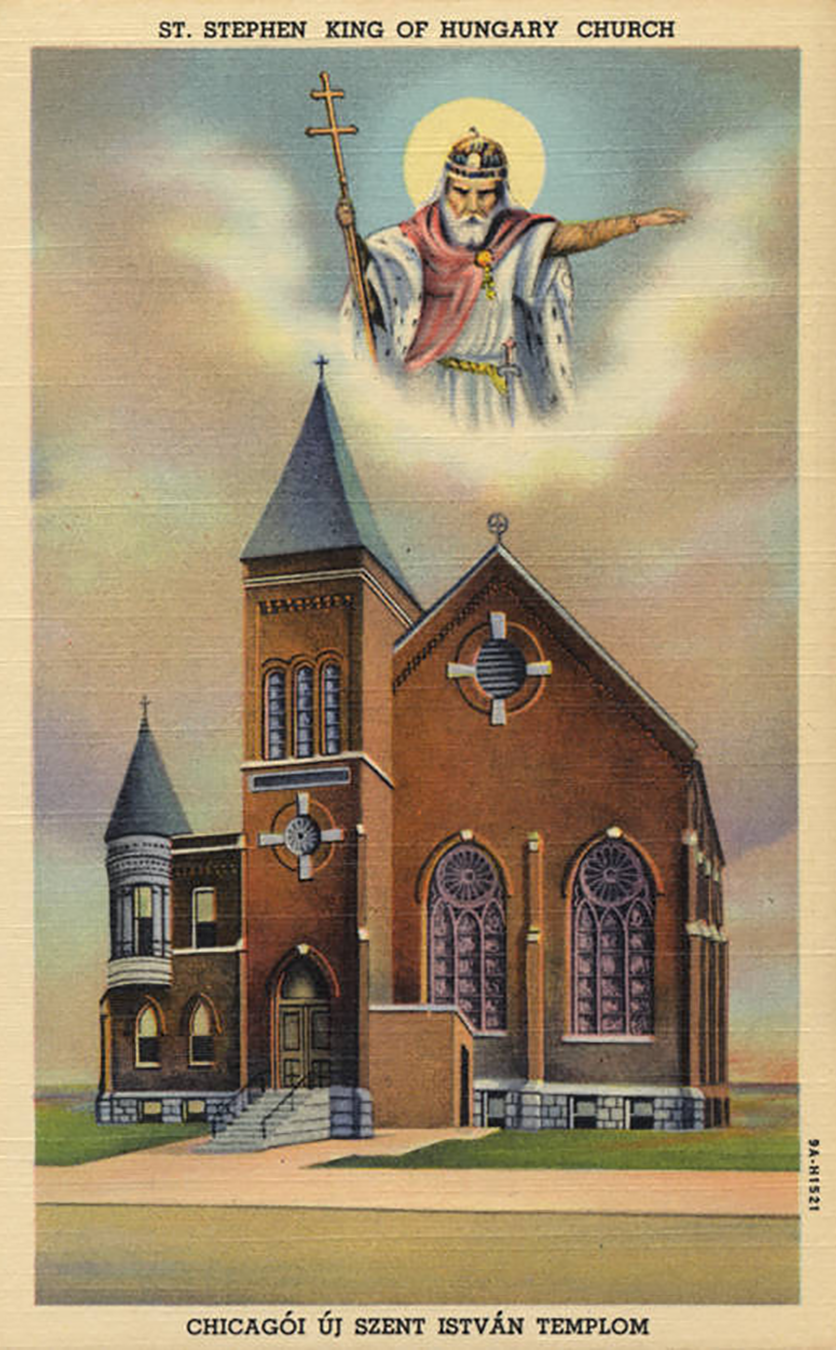
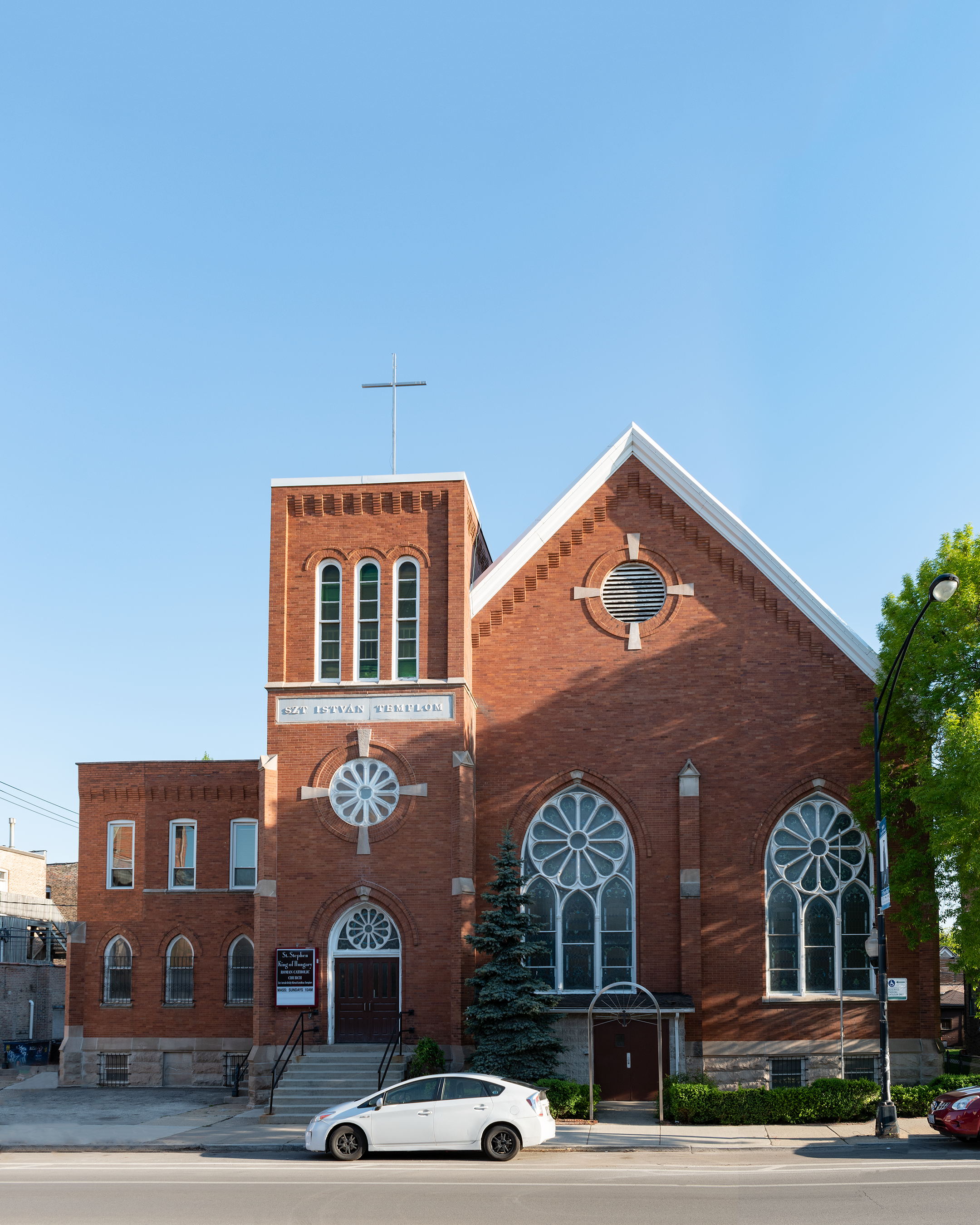
1939 production file envelope, Curt Teich Postcard Archive via the Internet Archive
Other Theodore Duesing-designed buildings included the (demolished) church at Ashland and Hastings, this home on University Ave in Hyde Park, and his firm ha its office in this building at 2700 W. Cermak.
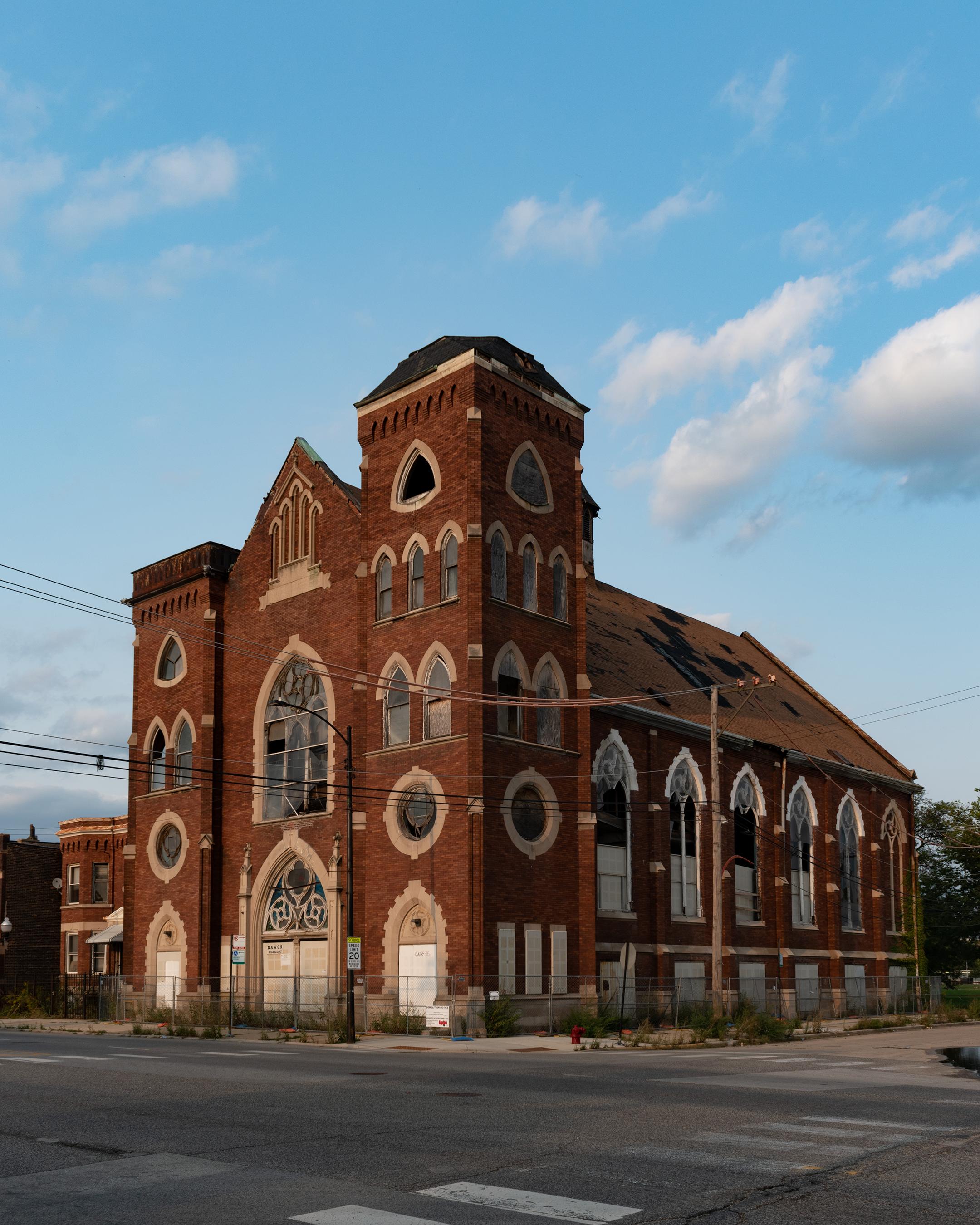
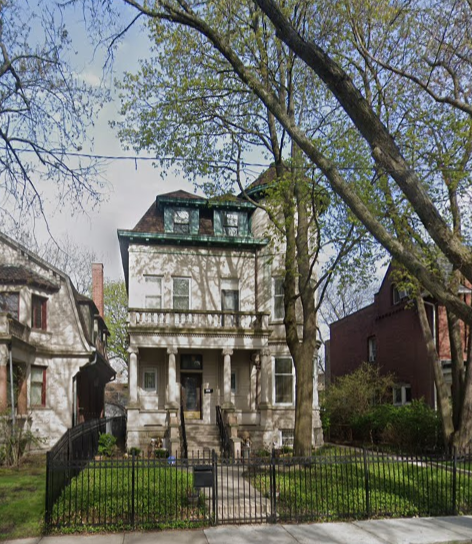
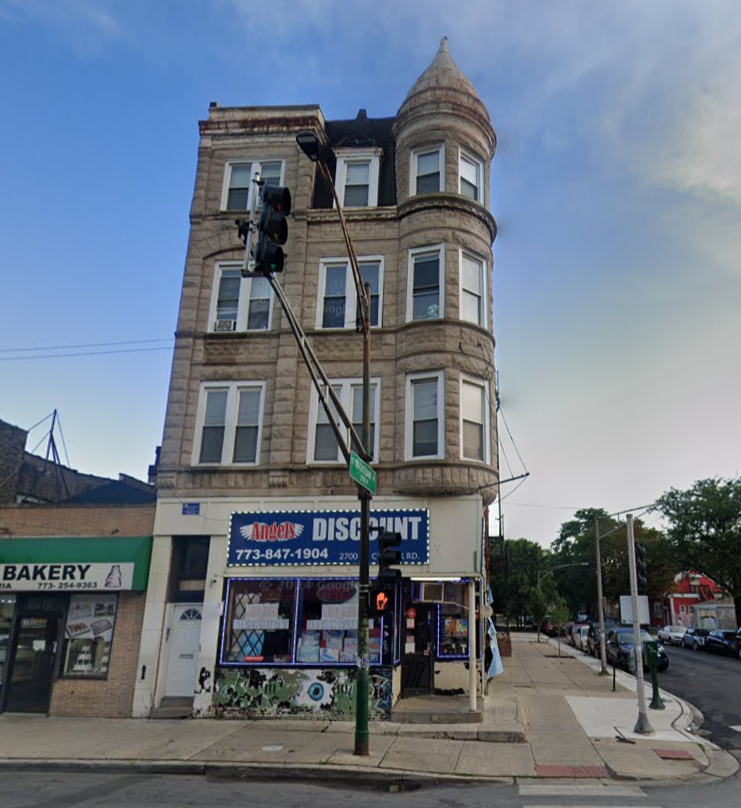
Duesing-designed church at Ashland and Hastings | Duesing-designed house on the South Side | building in which Duesing had his firm's office







Member discussion: